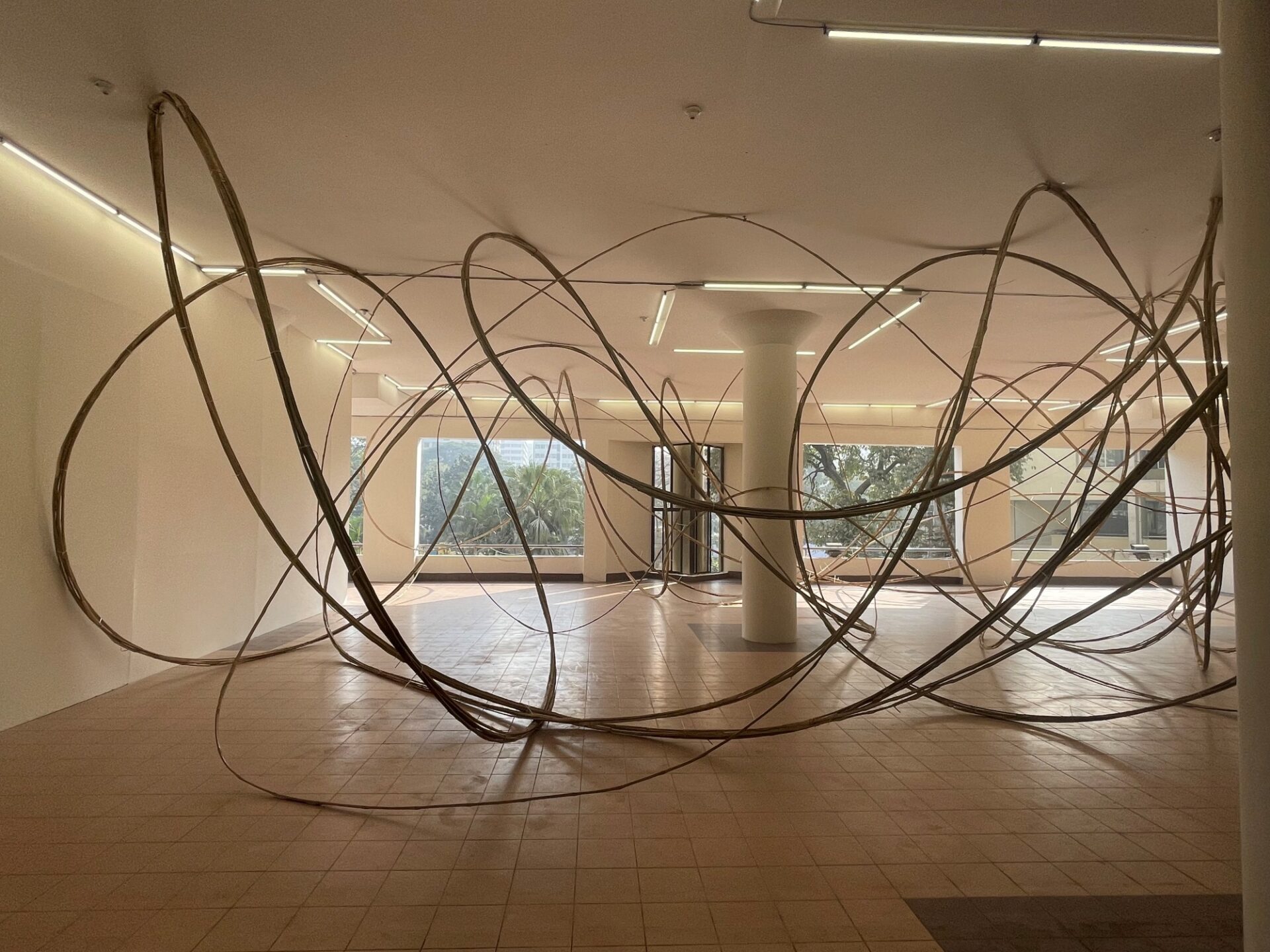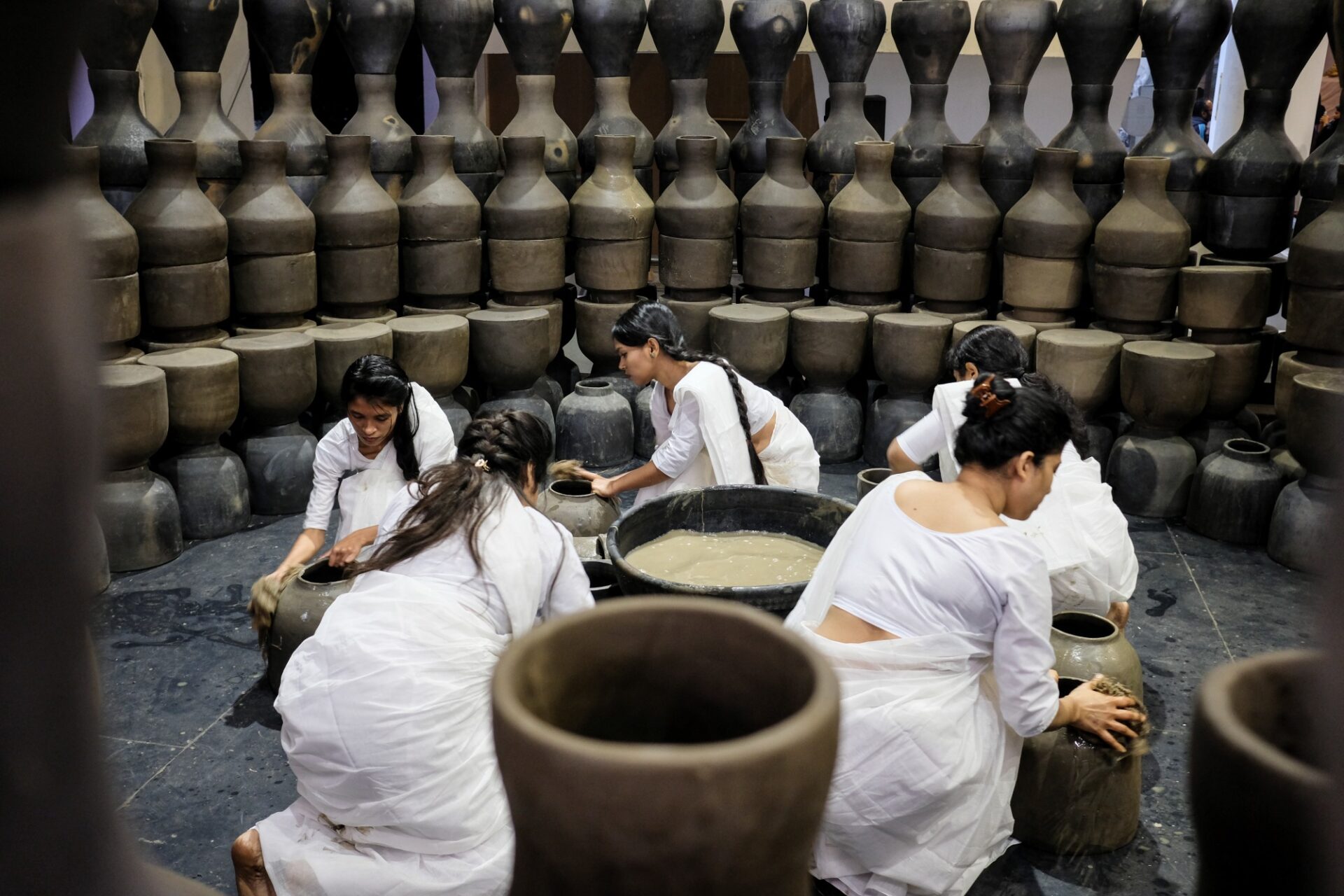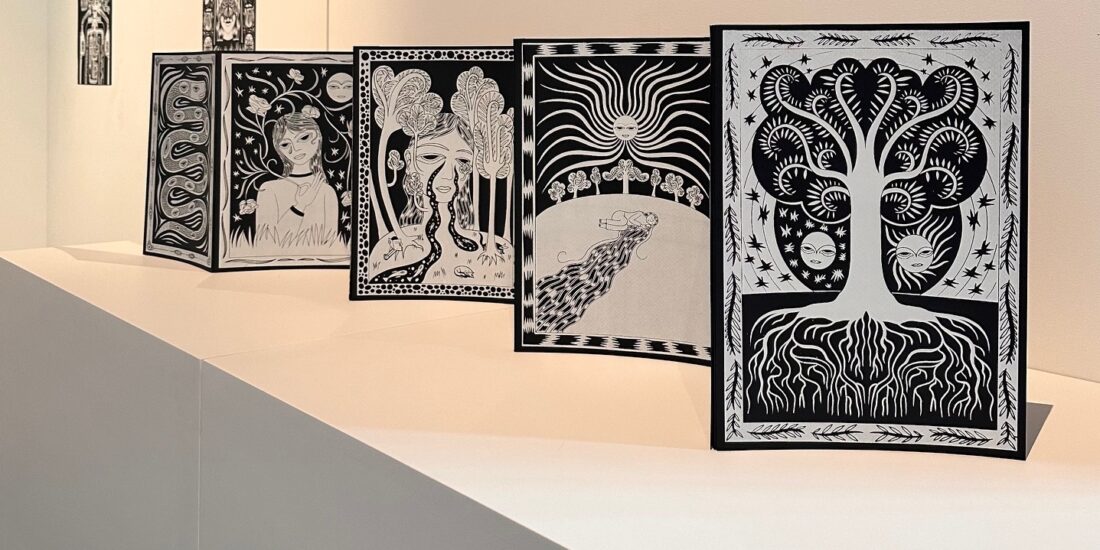Dhaka Art Summit Looks at Climate Crisis through a Local Lens
Titled Bonna – both the word for ‘flood’ and a girl’s name in Bengali — the Dhaka Art Summit brought together a diverse array of over 160 artists and collectives to explore Bangladesh’s nuanced relationship to words and water. This biannual nine-day research and exhibition platform was organised at the Shilpakala Academy, Dhaka from 3 – 11 February 2023.
Organised by the non-profit Samdani Art Foundation, DAS has become the global meeting point for research, discourse, and engagement with South Asian art. A bridge connecting Bangladesh to the rest of the world, the Summit has developed across five previous successful iterations under the leadership of Nadia Samdani MBE, who, along with her husband Rajeeb Samdani, drives the production of this dynamic platform forward, having established the Samdani Art Foundation in 2011 to support the work of Bangladesh and South Asia’s contemporary artists and architects. The Foundation’s Founding Artistic Director and the Founding Chief Curator of DAS, Diana Campbell, has since 2013 developed the Summit into one of the world’s leading curatorial platforms and sites for artistic production, in collaboration with its growing number of local and international partners.
SCALE looks at two installations that seem to give an insight into the wide discourse that celebrates this art festival.
 Antony Gormley’s work that looks similar to Asim Waqif’s installation at the Kochi Mzuri’s Biennale is the British artists’ first using bamboo. For this, the artist spent a week with six craftsmen from a village 80 km to the west of Dhaka. The artist worked with a team of Bangladeshi artisans to create TURN (2022-23), a ‘drawing in space’ made from 2.5km of bundled bamboo. An explosion of line, TURN invites viewers to transform its sinuous materiality into movement as they duck and twist through this looping entanglement. Temporary in nature, this dynamic field of energy evokes the shapeshifting journey of bamboo in Bangladesh – and will be recycled into other forms after the Summit.
Antony Gormley’s work that looks similar to Asim Waqif’s installation at the Kochi Mzuri’s Biennale is the British artists’ first using bamboo. For this, the artist spent a week with six craftsmen from a village 80 km to the west of Dhaka. The artist worked with a team of Bangladeshi artisans to create TURN (2022-23), a ‘drawing in space’ made from 2.5km of bundled bamboo. An explosion of line, TURN invites viewers to transform its sinuous materiality into movement as they duck and twist through this looping entanglement. Temporary in nature, this dynamic field of energy evokes the shapeshifting journey of bamboo in Bangladesh – and will be recycled into other forms after the Summit.
“With this organic material we were able to give the work clarity and a kind of lyrical looping speed that contrasted with the vertical and horizontal lines of the building’s architecture. I was very pleased when I saw people, particularly children, running, ducking, diving and jumping through it,” says the artist.
 Sumayya Vally hosted a series of performances that drew on the traditions of rain-making and harvest. Inspired by the IsiZulu proverb ‘He who brings rain, brings life’, Vally’s installation draws cultural parallels with the importance of rain in Bangladesh as the most important catalyst for agricultural production in the country. Vally’s design, research and pedagogical practice is searching for expression for hybrid identities and territory, particularly for African and Islamic conditions. Her design process is often forensic, and draws on the aural, performance and the overlooked as generative places of history and work.
Sumayya Vally hosted a series of performances that drew on the traditions of rain-making and harvest. Inspired by the IsiZulu proverb ‘He who brings rain, brings life’, Vally’s installation draws cultural parallels with the importance of rain in Bangladesh as the most important catalyst for agricultural production in the country. Vally’s design, research and pedagogical practice is searching for expression for hybrid identities and territory, particularly for African and Islamic conditions. Her design process is often forensic, and draws on the aural, performance and the overlooked as generative places of history and work.
At its centre is a circular basin of water placed upon a smaller ring of pots. In a nightly performance, a trio of percussionists use more ceramic vessels to create a soundtrack of rolling thunder and rain. Women in white saris methodically submerge what looks like jute rags, and use them to apply water to pots mounted on, and then taken down from, the inner wall.




